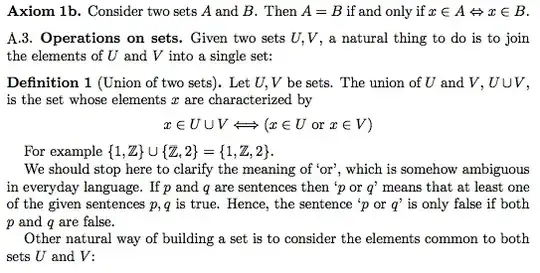this post gives some explanation about the definition and operation of sets.
the paragraph above
Axiom 1buses this symbol $\Leftrightarrow$ to indicate that p and q are equivalent.
the paragraph
belowAxiom 1buses this symbol $\Longleftrightarrow$ to give the Definition of "Union of two sets"
so, is the difference between $\Longleftrightarrow$ and $\Leftrightarrow$ is as follow?
$\Leftrightarrow$ represents equivalent
$\Longleftrightarrow$ represents definition

